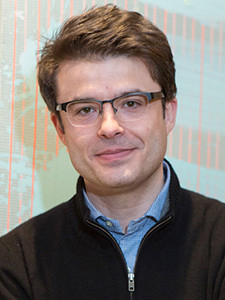
Yale News
Renowned science journal Nature has named Harvey and Kate Cushing Professor of Neuroscience Nenad Sestan — the senior author of Yale’s landmark study that restored some cellular function in dead pig brains — as one of 10 scientists who made a difference in 2019.
Since the study’s April 2019 publication in Nature, the study has gained international recognition from 355 different news outlets — making it one of the most recognized scientific breakthroughs of the year. Its co-first authors, Yale research scientist Zvonimir Vrselja and Stefano Daniele GRD ’21, have also won notable awards. Their work has the potential to fundamentally transform how scientists understand brain function and traumatic brain injury, such as strokes.
“As a scientist, it is nice to be recognized by your peers and know that what you do matters,” said Sestan. “I look at science as team work and this is recognition of previous members of the lab as well.”
After a 2019 leak brought the study to the media’s attention before its official publication, the groundbreaking results quickly went viral. Catchy headlines such as “Frankenswine” and “Aporkalypse” paraded the media. “Aporkalypse” was even trademarked and made into T-shirts.
“I only wish I had thought of it first,” Sestan joked in an interview with the News.
Although he said there were some sensationalized articles, Sestan said he was impressed that much of the media coverage was very precise and thoughtful.
“We were expecting media coverage, but not that much,” Sestan said. “It was a little paralyzing because we couldn’t do anything in the lab for a few weeks.”
In addition, Vrselja was named a finalist for 2019 Eppendorf & Science Prize for Neurobiology, which is awarded to the “one young scientist for the most outstanding neurobiological research,” according to its website. He “couldn’t imagine more exciting research than we are doing,” Vrselja said. Meanwhile, Forbes chose Daniele, a School of Medicine joint MD-Ph.D. student, for its 2020 30 under 30 Science list.
“Both these awards speak volumes about them and their hard work,” Sestan said.
“Being part of such an exciting project has been a life altering experience,” Daniele said. “Both Zvonimir and I can attest to never having imagined there being so much media coverage, and I personally feel super thrilled and blessed to have been able to participate and contribute to a project of this nature.”
There are six other labs at Yale that collaborated on the study within the engineering, physiological, biology, neuroscience and neurology departments. These groups have been meeting to carefully consider and develop their next stage of experiments. Additionally, they have consulted an external National Institutes of Health advisory committee to monitor ethical considerations of the project.
“From the get-go, we understood the possible implications of the study and involved a lot of bioethicists,” said Vrselja . “In practical terms, we have a good sense of what needs to be done and how to make the research ethical.”
Although the lab is not ready to disclose precisely what their next steps are, they shared that they have made a lot of improvements to their protocol, namely optimizing the synthetic fluid that was pumped through the brains. They are also working on a machine that automatically pumps this solution. The first machine, Vrselja said, was “very clunky” and “took up a third of a small room.” As they scale the project, they require automation to make the protocol feasible.
“We are trying to automate it as much as possible and create something that can run for days as opposed to six-hour time points,” said David Dellal GRD ’24 who is working with Sestan’s lab to improve the study. “We are looking to build the machine as robust as possible.”
Yale scientists had 57 articles published in Nature during 2018.
Tamar Geller | tamar.geller@yale.edu







